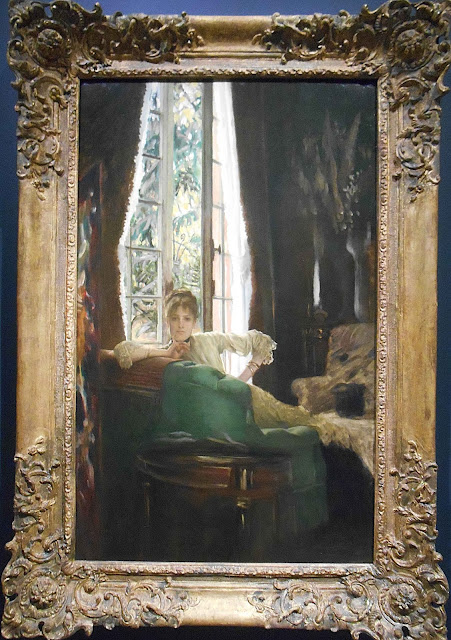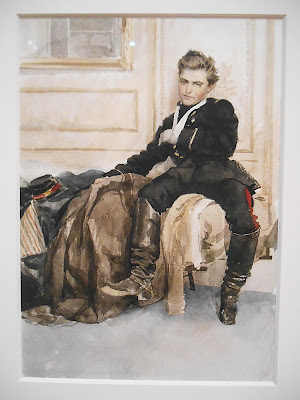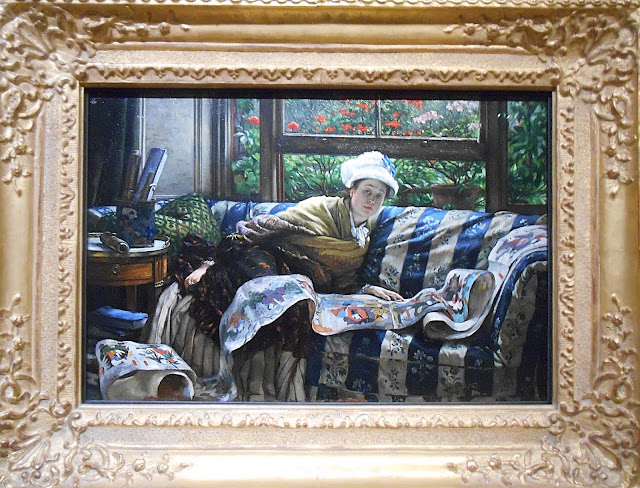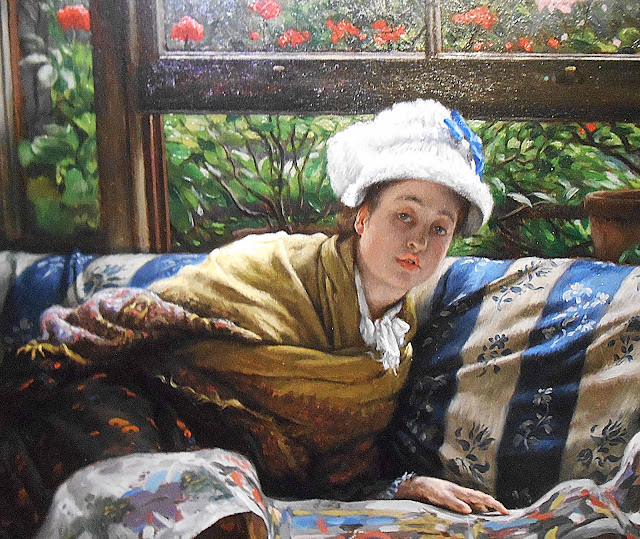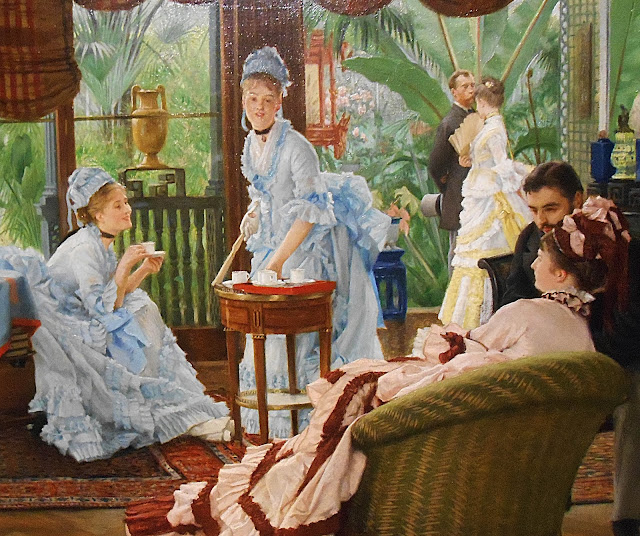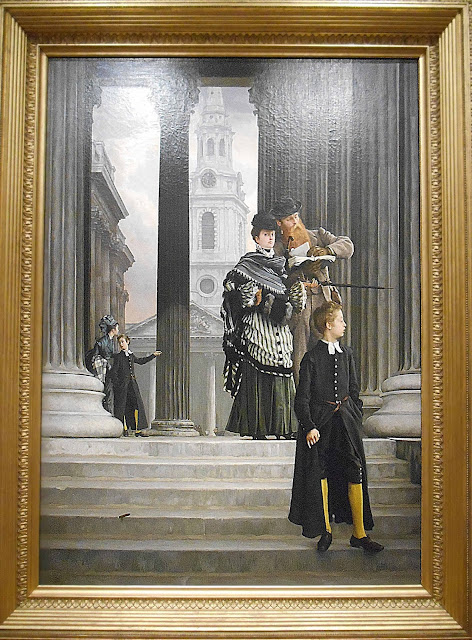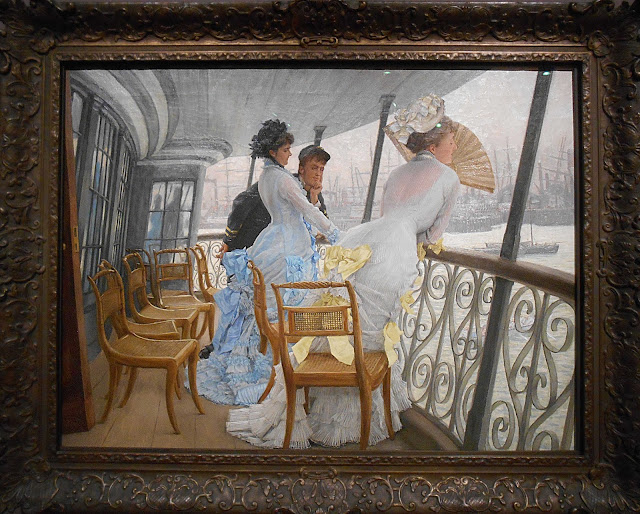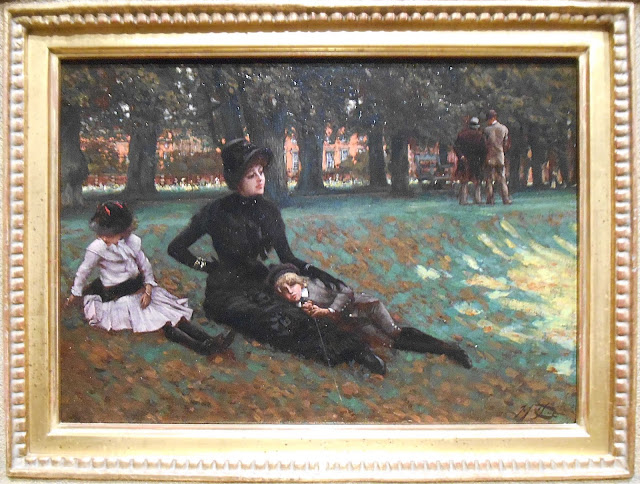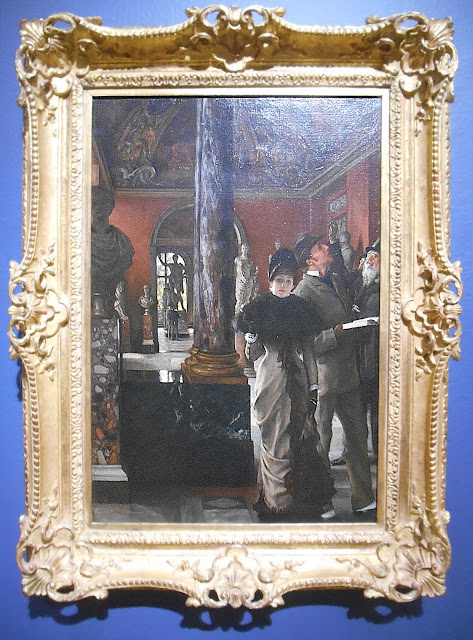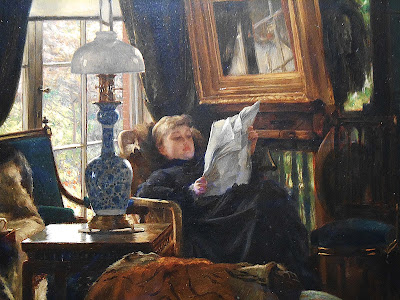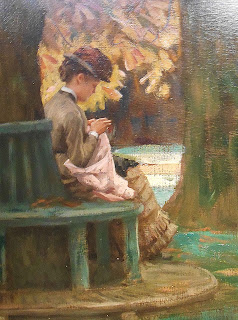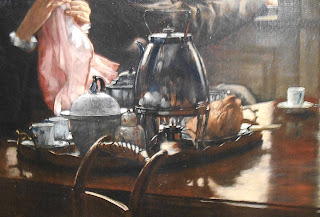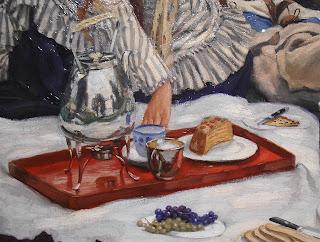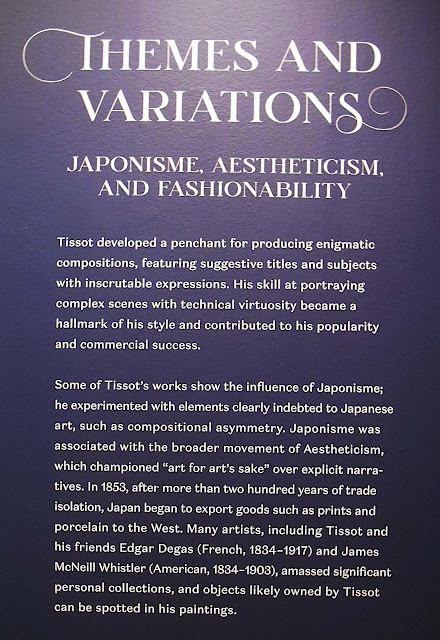James Tisssot Exhibition at Legion Of Honor
It is absolutely delicious treat for an artist to meet another artist's work in person. I've read several books on James Tissot's life and his art career; and when I learned that Legion Of Honor museum has a huge presentation of his artworks, I couldn't not to pack up for a long trip; and I visited this exhibition right away.
A room after a room, an artwork after an artwork, for hours, I was exploring his style, his brush strokes shifting from my current life into the life of his contemporaries, picking up on the stories and moods that he set up in his clever skillfully executed art.
Before I post his paintings with information about them, it is helpful to introduce the artist to you first.
During his lifetime James Tissot was one of the most celebrated artists. He was famous for his portraits and conversational pieces, for his hard work and strong artist statement of integrity, devotion to his trade, his religion, his Muse.
If he didn’t refused Degas to participate in the first Impressionists’ exhibition, perhaps today, he would be well known as Impressionist. But Tissot chose to be an artist who prefers earning with his art rather than protesting against any academies.
He received an academical education, he performed the excellency in his art, and he was devoted to his career to the last days.
His interests were in the society lives, and he captured his era amazingly precise.
He was born in Nantes, France in 1836 in wealthy merchants family. His father was not thrilled when James announced that he wants to study arts; but, his mother was an artistic soul and encouraged her son to pursue this career and follow his heart.
At age twenty Tissot went to Paris and studied hard absorbing all the knowledge he can get from great artists of those days. In Paris, he trained at the École des Beaux-Arts, worked hard, first earned little to sustain his study and stay by painting portraits’ commissions.
An amazing watercolor portrait of a young soldier:
Very quickly in his career, Tissot was recognized by fellow artists and customers; and his career grew fast and sturdy. The outbreak of the Franco-Prussian war at the beginning of 1870s pushed Tissot to move across the English Channel and he had to start his new endeavor in art all over again but this time in Great Britain, where he all over again gained undeniable commercial and critical success.
Today, art lovers can find Tissot’s works major collections worldwide. His art fascinates not only historians of visual arts, but as well historians in general as his artworks were documenting every single detail of those time with meticulous precision.
Tissot loved to experiment with major trends in contemporary art of his time. He was interested in Aestheticism and Japanism, Medieval History and modern life, the life that Impressionists put in their views first; but Tissot did not formally belong to the Impressionist circle, despite his friendship with Manet and Degas.
Tissot's exploration of Japanese style of dresses, accessories, forms:
His excellence of telling a story with simple gesture and Nature:
Tissot's early interest in Medieval times:
Many conversational pieces keep their stories, melt with Tissot's personal life, add mysteries to his choices of the objects and subjects:
Simple activities of his family add so much charm to his modern life stories:
It seems that pompous society gatherings made Tissot smile and definitely add his humor in many of his paintings:
Landscape to its tiniest detail did not escape his artistic eye. The composition is excellent, and the story is there to tell:
Being the master of anatomical features and likeliness in the portraiture Tissot intentionally celebrates feminine beauty of his subjects, merging the beauty of the Nature with the soft gentle beauty of a woman:
One of his famous artworks that brought lots of discussions to a society of those times:
Another controversial artwork that put some critics to discuss his choice of women outfits and behaviors:
Amazing skill of painting ship gears, ports, portraits and seascape scenery:
His love to his muse, Kathleen Newton and his extended family is definitely shown in this soft, gentle, sketch like piece:
The title of this painting is absolutely heart warming if one knows that Kathleen was actually an aunt to this girl, Lilian, and they had a very special bond:
And this painting is very close to my artist's soul as it was a first one of Tissot's art that I many years ago discovered at Smithsonian Museum Of Arts in Washington, DC.
Hide And Seek (1877) :
It was devastating to Tissot to lose Kathleen when she was sick. His last paintings of her reflect her consumption as they called those days a terrible disease, tuberculosis:
In Tissot's life, Kathleen was not only his Muse and his model, she was the purpose of his life, his karmic lesson, his Love Forever:
Here are a few details of his excellent skill of painting figures, areal perspective, achieving contrasts, amazing still life details, setting up the mood of the paintings by a single brush stroke in one place and scrupulous details in another:
Tissot was also interested in enamel. Here are a few metal objects that he painted:
I loved how curators of the exhibition organized the space presenting different periods on Tissot's art career and his personal life from one room to another. The exhibition was full of educational notes and it was truly inspiring to learn more about the artist's path, his hopes and dreams, his connections, his art.
On a top of all the exciting news, the 300 plus pages catalog of Tissot's artwork and his photographs that include his personal notes was certainly a treat for my artist's soul!
Live to create!!!













